Unsure how to choose the best blinds for sunroom windows, which filter out all UV rays and provide daytime privacy, while still letting in enough brightness and warmth to preserve the function of your sunroom? Here are key factors to consider when choosing the right sunroom blinds to transform your sunroom into a cool, comfortable retreat and an ultimate outdoor oasis!
A sound knowledge of the sun-blocking potential of the relative tightness of weave, availability of space (window depth) where you need to install blinds, type and direction of sunroom windows, solar resistance of the material, will help you choose the perfect blinds for your sunroom’s windows.
Key Factors to Consider when Selecting the Right Blinds for Your Sunroom
Relative Tightness of Weave for More or Less View-Through & Thermal Protection
If your sunroom is exposed to the late morning and early afternoon sun, tightly woven sun shades with optimum 7% to 5% open weave will reduce unwanted solar heat gain by up to 60%, according to the U.S. Department of Energy. In other words, they can create a temperature difference of up to 10 °C. For example, it can cut down temperature from 40 °C to 30 °C, providing you with free air-conditioning!
For an open window-like view-preservation, choose 10% openness, which will also provide enough daytime privacy and create a temperature difference of up to 7 °C, still a big one!
Two months ago, our worthy client Debra ordered 14% openness sun blinds for her seaside lodge’s sunroom at Florida’s east coast. It worked well on North-facing windows, but on east- and south-facing windows, the sun was so hot that lots of heat penetrated in.
She contacted us & explained the issue. We immediately responded with a replacement with 10% open tapestry (this time cellular shades to help her with solar insulation), which worked well.
DIY Sunroom with Thinner Walls & Window Frames? – Select Sleek Rollers for Space Optimization and Convenience Combined!
If you have built a temporary, portable sunroom during your camping tour to desert or coastal terrains, it would very likely be made from polycarbonate strips, measuring only 2” to 3” in thickness. In such cases, the windows typically measure 2.25” to 2.5”. We guess you’d like an inside mount to preserve the cleaner aesthetic of your sunroom. We highly recommend outdoor solar roller shades that require only 2.25” of recess for unobstructive installation and smoother roll-up.
Pros & Cons of Roller Shades for Sunrooms
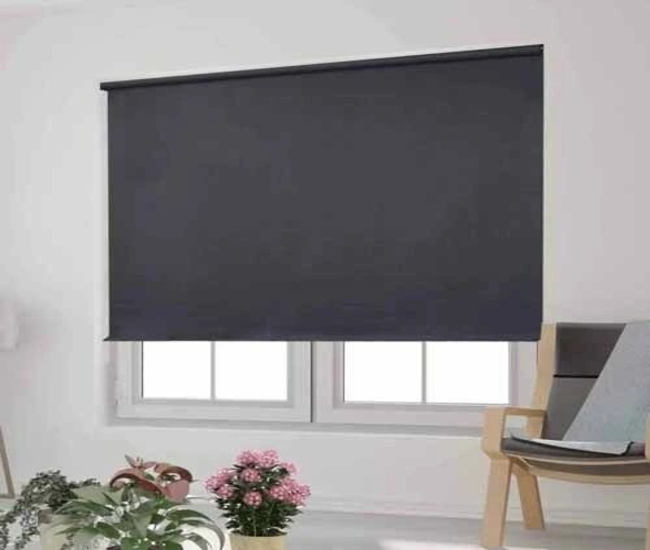
Pros
- Ideal for slim-fit situations
- Excellent UV and glare protection
- Will help regulate temperatures and lower energy bills
- Available in opaque fabric to create a room darkening effect (if you want to sleep in your sunroom!)
Cons
- Can’t fit all windows, especially unusual, odd-shaped frames.
- Offer a relatively small amount of insulation compared to cellular shades.
Why Not Roman Shades for a Big, Immovable Brick-and-Mortar Sunroom?
If you have enough space in your sunroom for outside mounting window coverings, go for Roman shades. Thicker fabrics will work better in hotter, harsher climate zones, repelling or reflecting extra heat and UV rays.
Pros & Cons of Roman Shades for Sunrooms
Pros
- A wonderful choice for a pure visual impact to your sunroom’s interior.
- Can add a more rustic or natural theme to your retreat.
- Available in sheer, light filtering, and blackout option to precisely customize light entering your sunroom.
Cons
- Not ideal for sunrooms located near high-humidity areas, such as coastlines.
- High upfront cost compared to roller shades and cellular blinds.
- More susceptible to staining than holeless, slatted faux wood blinds.
Design Tips for Selecting the Right Roman Shades
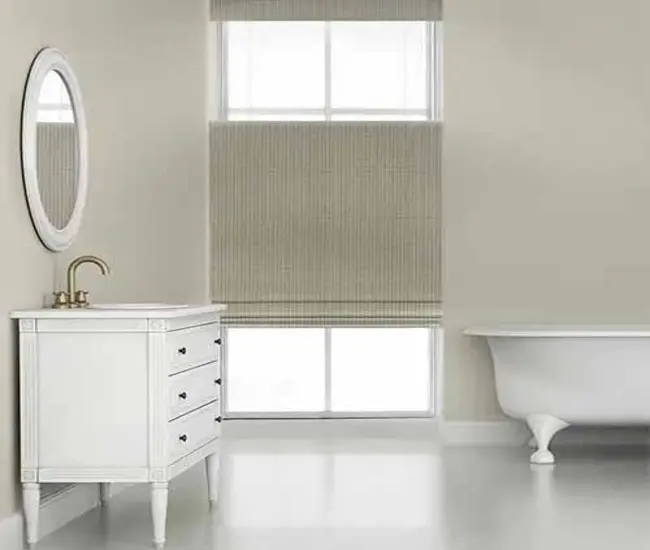
Choose lighter, neutral colors (like white, gray, silver) for versatility, or select darker, bolder, brighter-colored Roman fabrics to make windows the focal point of your room.
Consider fold styles (such as soft fold, flat fold, plain classic fold, european relaxed fold and front slat fold) to match your sunroom’s overall decor – furniture, furnishings & carpeting.
If your sunroom windows are exposed to direct sun for 8 to 10 hours a day, your blinds may get faded within days. So, search for specialized synthetic blind Roman shades that resist discoloration.
Cellular Shades – A 4-Season Option to Beat the Heat (and Cold!) Round the Year
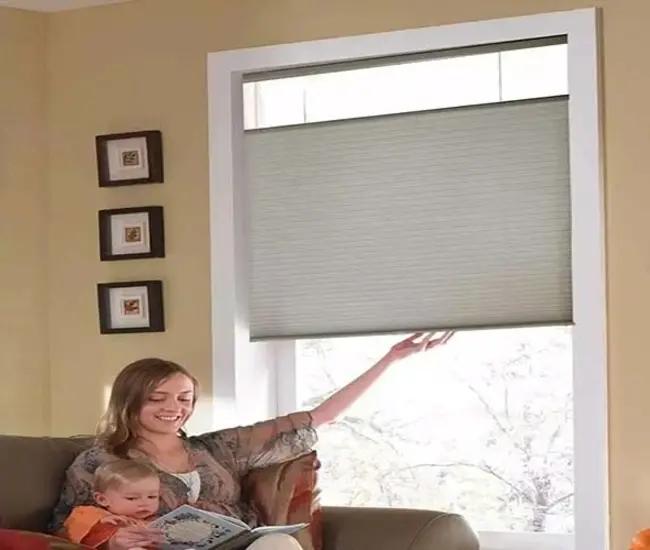
Cellular shades are the best four seasons sunroom shades, as they are made from multi-layered air-trapping cells, which create a strong insulation barrier against the infiltration of light, prying eyes, glare, heat, and cold.
Pros & Cons of Four Seasons Sunroom Shades
Pros
- An all-in-one, all-weather solution for treating sunroom windows!
- Designated as energy efficient window coverings by the U.S. Department of Energy
- Allow you to control brightness in your room.
Cons
- Will not provide 100% sound proofing if your sunroom is situated in a noisy neighborhood.
- Difficult to clean, due to the air-trapping nature of the empty cellular compartments.
Motorization – If you Like the Luxury!
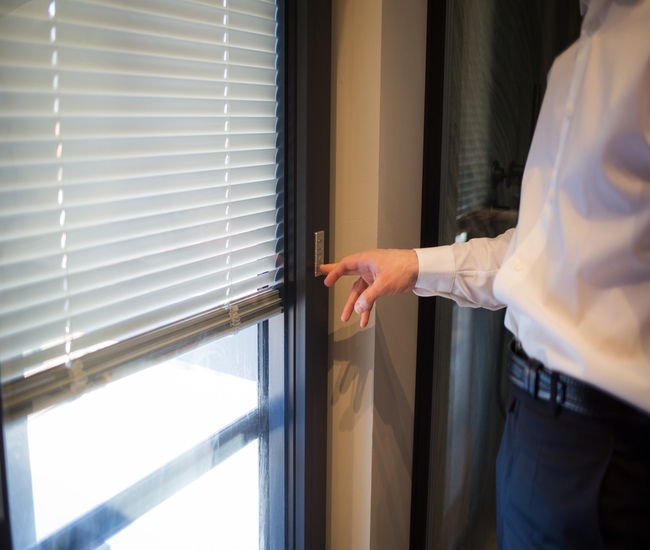
Motorized sunroom window coverings come with a wireless remote control, so you can raise, lower or adjust the height of blinds with the push of a button! And if your sunroom is integrated with your main smart home automation system, motorized blinds for sunroom can be connected to that too.
Price Factor – Your Budget Really Matters!
Faux wood blinds & roller shades are the most affordable options for sunroom, with prices starting from as low as $45.5 for 24 x 36” sunroom windows.
Honeycomb blinds are a moderately priced option (with tremendous insulation power), with prices typically ranging from $55 to $195 for 24 x 36” to 72 x 84” windows.
If your budget allows, you can happily go for the costliest option, i.e.,motorized Roman shades, which will cost $330 for a 24 x 36” window. Note you can get at least 6 same-sized (24 x 36”) cellular shades against the price of a single motorized roman shade!
Request Free Sample to See How to Look and Work in Your Sunroom
Some sunroom blinds manufacturers, like AffordableBlinds.com offer free samples and free shipping, so you can have a first-hand experience with the product. It will decide if you really need it.
FAQs
What kind of blinds do you need for a sunroom?
- Sun shades – Made from woven mesh-like fabric to beat to effectively filter sunlight, reduce intense glare, and preserve the view.
- Roller shades – functional blinds offering a clean, sleek, minimalist look for a room full of windows.
- Cellular shades – high performance insulated blinds for sunroom to beat both the UV rays and the heat
- Bamboo shades – bring nature to your sunroom, which protects from the harshness of sun like a mother.
- Motorized light filtering shades – open or close the blinds with the press of a button on your wireless remote control.
Should blinds be lighter or darker than walls?
- Lighter for Better Color Compatibility: Lighter blinds than the wall offer a seamless, minimalist look and make your room look bigger. Lighter color blinds also blend perfectly with various decor styles and feel rather more subtle, as onlookers’ eyes will skim over them rather than pausing on them.
- Darker for More Warmth & Intimacy: If you want to make your space warmer, more intimate and engaging, select darker colored blinds than the wall.
What blinds does Joanna Gaines use?
Joanna Gaines – a famous American interior decorator with 14M followers on Instagram – has been spotted on her TV shows frequently featuring neutral-colored linen Roman shades in her interior designs. According to her, Roman shades are a versatile and functional option for different spaces and styles of decor, from traditional to contemporary
What is the current trend in window blinds?
Solar roller shades are trending nowadays for compact design, easy roll-up operation, and a unique synthetic material that blocks up to 99% of the UV rays, while still letting natural light cascade through. They cut glare for softer light, insulate your space for significant energy savings and more comfortable temperatures.
What type of window is best for a sunroom?
- Design – Picture windows, casement windows, sliding windows, and double-hung windows are the four best options for sunroom windows.
- Functionality – Your choice will depend on your ventilation needs, space, and accessibility. The materials like wood, fiberglass, and vinyl offer unique benefits for solarium blinds, impacting durability, ease of maintenance, and energy efficiency.
- Energy Efficiency – For maximum energy efficiency and cost-effectiveness, select triple-pane windows for your sunroom.
Practical Design Tip
- Cover picture windows with boho-inspired vertical panel track blinds for easy view-through, aesthetic, and sun protection.
- Wood blinds are the best option for your sun room’s casement windows. They are stylish and give you control over the amount of light and privacy.
- We recommend top down bottom up cellular shades for double-hung sunroom windows for super light control, privacy, ventilation, insulation, and versatility.
Need More Help?
Need design consultation or any other help related to selecting the right sunroom window treatments? We’re ready to assist and invite you to 24/7 live chat. Or contact us at (800) 863-6109, or customerservice@affordableblinds.com for further assistance.
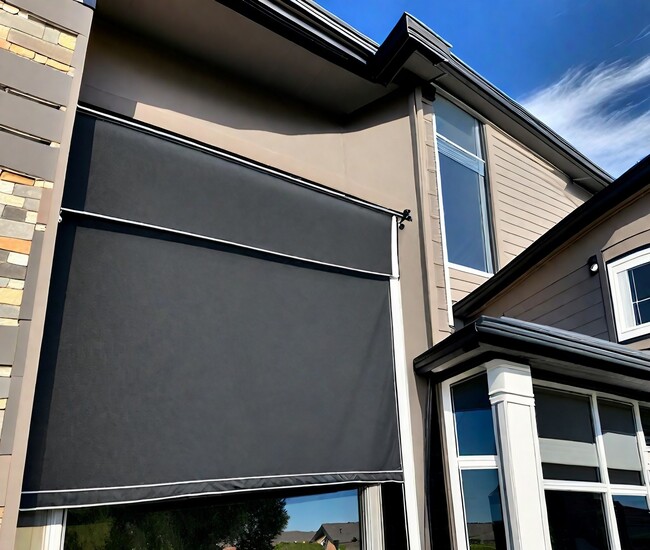
Leave a Reply